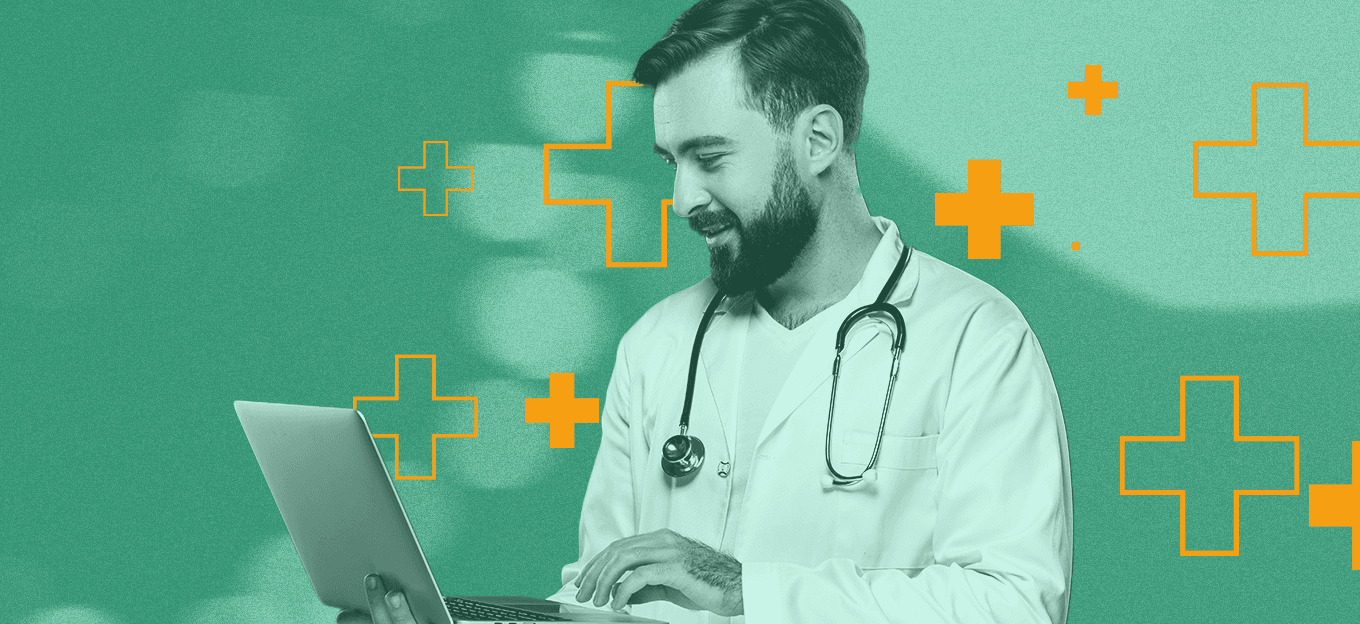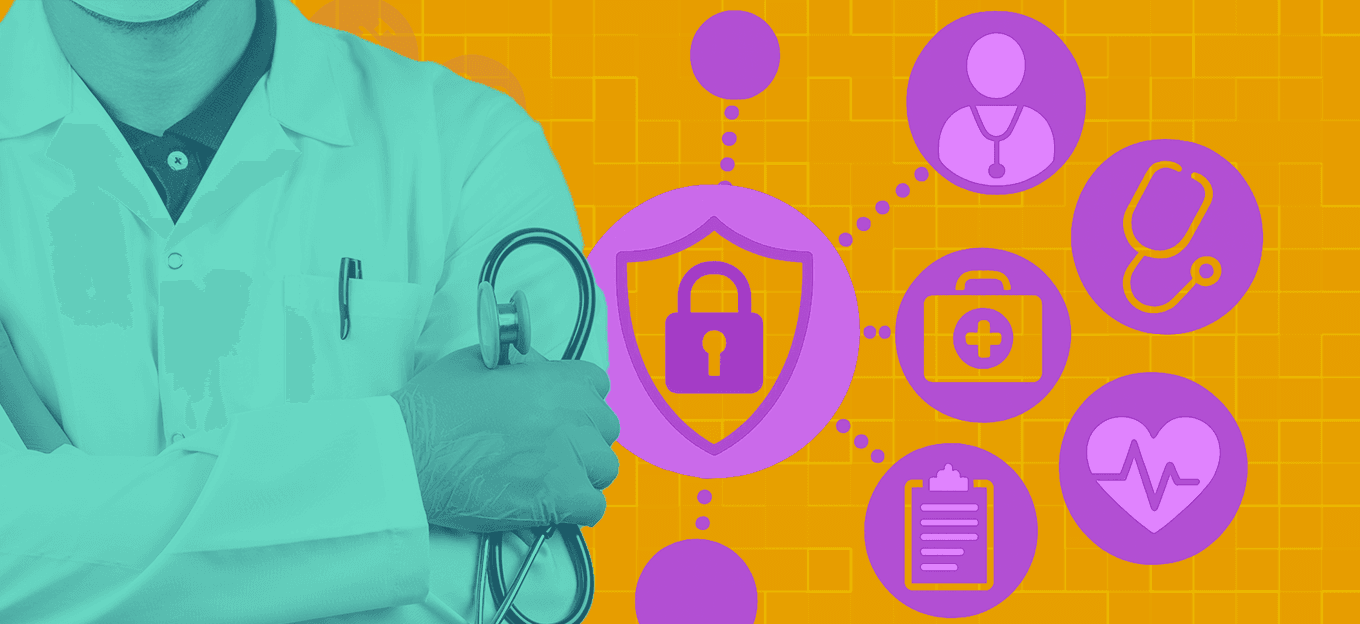How AI and IoT Play an Important Role in Healthcare Today
How AI and IoT Play an Important Role in Healthcare Today
- Last Updated: December 2, 2024
Hologram
- Last Updated: December 2, 2024



From on-the-go wearable devices like fitness watches to at-home devices that help physicians monitor their patients remotely, IoT in healthcare has changed dramatically over the last couple of decades. In this post, we’re examining how IoT applications create new healthcare solutions in real-time to deliver a better quality of care for patients ultimately.
There are several ways connected devices simplify patient care or enable healthcare providers to monitor patients, including healthcare facilities and smart hospitals. Here are 5 examples.
Amid the global pandemic, healthcare applications' innovation continued to grow, and there’s no end in sight. This growth is benefiting patients, physicians, and hospitals alike. With the help of IoT, patients can control their health, while physicians and hospitals are better equipped to provide resources and care. There are unique IoT applications, along with the invaluable data they provide and the challenges that IoT adoption currently is facing.
Five Key Uses of IoT Devices for Healthcare
There are several ways connected devices simplify patient care or enable healthcare providers to monitor patients, including healthcare facilities, smart hospitals, or remotely. The following are five examples of IoT applications for healthcare.
Wearables
Wearable devices can track a patient’s heart rate, blood oxygen level, sleep habits, breathing, and other important health data. Millions of people use health monitors like the Fitbit or Apple Watch, and healthcare IoT developers are continuing to develop new Applications for wearable tech. Fall detection is one example. FallCall Solutions has developed a fall detection app for the Apple Watch. Simultaneously, Stanley Healthcare’s Foresite monitors a patient’s activities and uses predictive analytics to create alerts if it detects an increased risk of falls.
Blood Pressure
Connected blood pressure monitors provide a link between patients and their doctors and help paint an overall picture of a patient’s health. One example is BioTelemetry’s connected blood pressure monitor, which transfers readings automatically to a secure online platform. Patients can regularly test at home and share readings easily with healthcare providers.
Glucose
Like connected blood pressure monitors, glucose monitors can help patients manage their care at home and collect a helpful body of data over time. Some traditional glucose monitors can be connected to a smartphone app for data collection, and newer continuous glucose monitoring (CGM) systems such as FreeStyle Libre work by applying a wireless sensor to the patient’s arm, which can be scanned with a handheld device to get a blood sugar reading as often as the patient wants to check.
Heart Rate
Heart rates can be an indicator of overall health, and runners and cardiac patients alike benefit from keeping track. Connected wristbands often include heart rate monitors, but the most accurate heart monitors are worn around the chest. One example is the Polar H9, which can connect to a wide variety of secondary devices via Bluetooth and ANT+. The device links with apps to plan fitness training and analyze readings and its battery last up to 400 hours.
Inpatient Management
Hospitals are increasingly using IoT technology to manage their resources and inpatient care better and are often termed ‘smart hospitals.’ IoT devices can automate workflows, perform AI surgery, and monitor healthcare workers’ hygiene standards. For example, one application is GE Healthcare’s AutoBed, which helps to optimize inpatient bed assignments. Mount Sinai Hospital in New York City has cut ER wait times in half by using the software, which has been called the “air traffic control of hospital beds.”
Future of Healthcare IoT
As technologies mature and improve, IoT is set to become an integral part of healthcare in the U.S. and around the world. Here’s a closer look at a few of the issues affecting IoT adoption in the healthcare sector.
Impact of the COVID-19 Pandemic
The COVID-19 pandemic sparked wider interest in IoT technology and its potential for remote patient care, hospital management, and contact tracing. Healthcare professionals saw that IoT sensors for remote monitoring could bring tremendous value during a pandemic when it’s better to keep vulnerable patients away from congregant settings like waiting rooms and doctors’ offices. And hospitals faced with an abundance of virus patients welcome the IoT technology that can help them streamline workflows, track available beds and medical equipment, and monitor the effects of new treatments.
Evolution of Telehealth
Spurred in part by the pandemic, healthcare providers worldwide have incorporated telehealth into their repertoire of care services. In the U.S., telehealth visits increased by 50 percent in the first quarter of 2020, according to the CDC. Providers can access readings from home monitoring devices and meet with patients via videoconferencing platforms, in some cases eliminating the need for frequent in-person check-ups. Telehealth services can make it easier to reach patients in remote areas and offer affordable healthcare to the uninsured. While telehealth will never completely take the place of in-office visits, many believe it’s here to stay as a go-to option for routine disease management, mental health care, and other conversation-centered encounters.
Cellular Connectivity and 5G
As IoT technology continues to change the face of healthcare, developers need dependable connectivity options for their health monitors, especially those that will be deployed in remote areas. Wi-Fi and Bluetooth work well in some settings, but those technologies depend on a secondary device, such as a smartphone, for the monitor to be paired with. For mission-critical healthcare devices, developers may choose cellular connectivity, either as a backup option or the primary link. As 5G becomes ubiquitous, there’s likely to be a greater shift toward cellular connectivity for healthcare IoT devices.
The introduction of 5G is another factor set to accelerate the adoption of healthcare IoT. 5G’s high-speed, low-latency connectivity will enable creating more complex real-time health monitoring devices and management platforms. It will also allow real-time data flow between doctors at different hospitals who wish to consult with each other about their care. And 5G will link mobile units such as ambulances with healthcare providers, enabling doctors to consult with first responders regarding emergency decisions. Remote surgery is another possible application, allowing surgeons to operate on patients from a combination of virtual reality and robots.
During Covid-19, we saw an increased demand for IoT device usage, up nearly 150 percent. This was largely part of increased contact tracing, micromobility, and other social distancing solutions. We can safely anticipate the trends in IoT healthcare will continue. Another reason pointing to it? It already has its own acronym, IoMT.
Like everything in life, the implementation of IoT applications in healthcare is not without its challenges. Still, in an increasingly connected world, the goal is to make life easier (and better) for all.
The Most Comprehensive IoT Newsletter for Enterprises
Showcasing the highest-quality content, resources, news, and insights from the world of the Internet of Things. Subscribe to remain informed and up-to-date.
New Podcast Episode

IoT and AI in 2026
Related Articles





